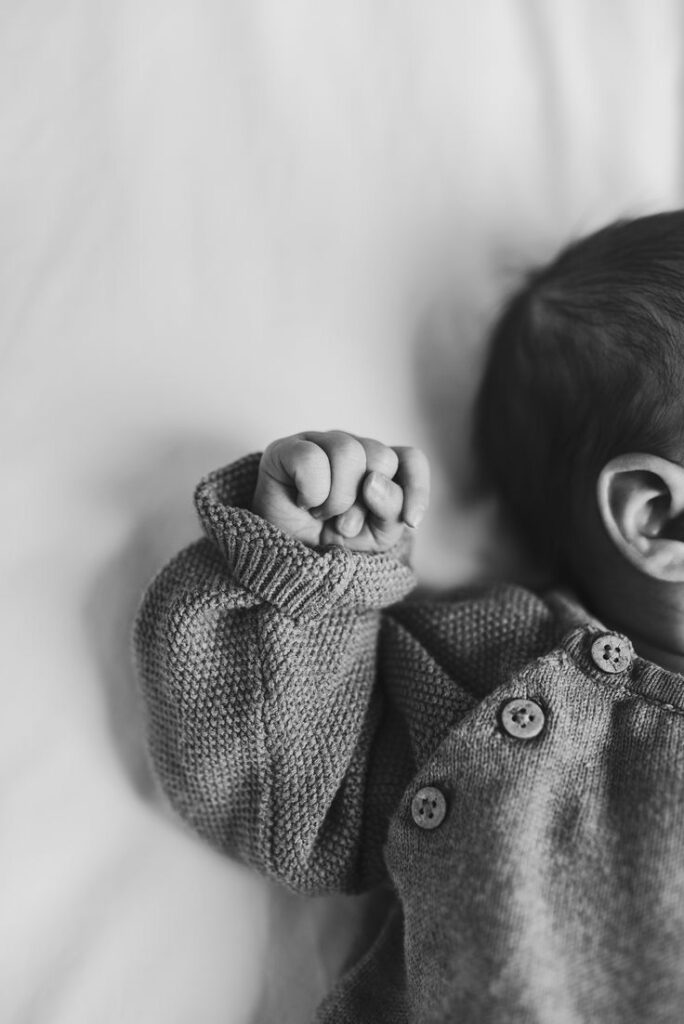Newborn photography provides precious memories for parents and families to cherish for years to come. Babies grow and change so quickly in their first year, it’s important to capture them at this tiny, fragile stage. Newborn photos offer a timeless snapshot of this special bonding period between parents and their new addition.
Professionally shot photos allow you to see the details of your infant you may miss with casual snapshots, like tiny fingers and toes or pea-sized facial features. Ten years later you’ll be glad to have high-quality close-ups to compare how much they’ve grown. Newborn sessions are also a lovely way to introduce siblings or other family members to the baby in photos they can keep for life.
Sharing newborn photos with loved ones near and far helps them feel connected to the baby even if they can’t visit in person. The photos represent a wonderful keepsake grandparents or extended family will treasure. Overall, newborn photography ensures this important milestone is celebrated and commemorated forever through images. It’s a priceless gift parents can give themselves and their baby.
When to Take Newborn Photos



The ideal age range to photograph a newborn is between 3-14 days old. During the first week, babies spend much of the time sleeping as they adjust to life outside the womb. By the second week, they are more awake and alert.
At around 10-14 days, babies will have lost some of the fragile “newborn” look and their features will become more defined. This makes for highly expressive photos where you can capture their personality starting to shine through.
After 2 weeks, excess sack wrinkles and swelling usually disappear. Be mindful that past 3 weeks, babies begin pushing up on their arms and trying to hold their own heads up. While still cute at this stage, the poses become more limited.
The first few weeks are also the times parents are most rested and available. As long as the baby is feeding and sleeping regularly, mornings or evenings tend to work best before or after any scheduled naps. Be flexible, as a baby’s schedule can change daily. With practice timing it right, photographers can work magic when babies are happiest and most photogenic.
Newborn Photography Equipment
While newborn photography doesn’t require an expensive kit, there are some essential pieces of equipment photographers use to best capture delicate babies. A fast prime lens between 50mm-100mm allows sharp focus on tiny details from a close shooting distance. Flash modifiers like softboxes ensure any light used doesn’t overwhelm delicate skin.
Durable camera bodies suited for low light are ideal when capturing sleeping babies. A compact camera with easy manual controls is preferred so settings can be quickly adjusted without flash. Extra batteries, memory cards and release cables keep the shoot seamless.
Photographers may bring along reflective prop boards or cloths to add fill light. Warm backdrops provide a cozy feel. Professional-grade lenses, lighting modifiers and studio camera setups allow newborn specialists to freeze expression details and illuminate babies beautifully in even the toughest conditions.
Best Lens for Newborn Photography
When it comes to photographing tiny newborns, a short telephoto lens between 85mm-135mm is ideal. This focal length allows you to get reasonably close to your subject while maintaining enough distance not to disturb them. Lenses in this range also have nice portrait qualities like blurred backgrounds that isolate the baby from any distractions.
Popular choices include an 85mm, 100mm or 135mm prime lens. Prime lenses with their fixed focal lengths typically have larger maximum apertures of f/1.8 or wider, allowing for shallow depth of field and control over ambient light. The lens’ wide aperture facilitates quicker shutter speeds to freeze newborn movement and blur artifacts from camera shake more easily.
Zoom lenses lack the wide aperture and background blur qualities of primes but offer flexibility if you need to adjust distance from the baby. Overall image quality tends to be highest with prime lenses designed specifically for portrait use. Be sure the lens is sharp across the frame for those detailed baby face shots.
Newborn Photography in the Studio
While location shoots offer natural backdrops, a photography studio provides a controlled environment ideal for newborn sessions. Studios allow photographers to control lighting and ensure consistent conditions session to session.
Black or white seamless backgrounds in a studio eliminate visual distractions, making the baby the clear focal point. Additional paper backgrounds or props can be brought in when needed.
Well-known newborn photographers have invested in dedicated newborn studios. Features like large space, soundproofing, and climate control help babies stay comfortable. Light boxes and adjustable lighting with variable settings allow precise illumination.
Spacious studios accommodate multiple setups on a single shoot day. From baby on blankets to props like moss or furs, options inspire natural but studio-quality images. Wire faux fur or knit throws provide extra warmth and texture.
Well-lit and organized studios mean minimal fuss between poses. Photographers can focus fully on that precious window when babies are alert yet peaceful. Resulting photos captures priceless first moments.
Newborn Photography Lighting Setup
Studio Lighting Setup for Newborn Photography
A simple yet effective studio lighting setup is ideal when photographing newborns. A large softbox directly overhead acts as the main light and provides soft, even illumination. This is positioned around 3-4 feet above the baby.
A second softbox can be placed to one side at around a 45 degree angle to act as a fill light. This helps eliminate shadows on the baby’s face. Both softboxes should have diffusers attached to spread the light across a large area.
Reflectors are also valuable. A large white reflector on the opposite side of the main light helps bounce additional fill onto the shadows. A silver or gold reflector can be used underneath the baby for a subtle highlight.
Properly metering and balancing the lights is important. Test shots are a must to ensure the lighting ratio is flattering before bringing in the baby. Using lower powered flashes or continuous lighting helps prevent harsh, direct light that could disturb a newborn.
Newborn Photography Backdrops
Choosing complementary backdrops is important for newborn photo sessions. Simple, solid color muslins in neutral shades like ivory, gray or light blue make beautiful backgrounds. Their seamless surfaces avoid disruptions in the baby’s space.
Textured fabrics like faux fur, knits or linen lend visual interest and simulate cozy crib bedding. Natural materials like moss, woven grass or flower petals placed beneath the baby lend an organic feel.
Backdrops with texture, color blocks or patterned sections give the photos variety without being too stimulating for newborns. A mix of soft hues and subtle designs work well paired with basic onesies.
For outdoor shoots, large swaths of print or solid fabrics can be quickly assembled as portable backdrops. Soft grass, fields or fallen leaves make lovely natural alternatives too.
Photographers may also use couches, baskets, prop chairs or blanket-draped walls as unique scene settings. With versatile options, each newborn’s session can have a customized look and feel perfect for capturing their brief first moments.
Related Post: Family Photoshoot Ideas
Newborn Photography Studio in Dubai




As new parents, finding high-quality newborn photography close to home is a priority. With a top-rated studio located right in Dubai, at Vibeztudio we make professional portraits incredibly convenient and accessible. Just a short drive from anywhere in the city, our state-of-the-art studio allows families to capture those first precious moments without travel hassles. Our experienced photographers specialize exclusively in newborn and baby portraits.
We offer daytime, evening and weekend appointment slots to accommodate every schedule. We also provides quick turnarounds with images sent digitally within 48 hours. To give your baby’s photographic keepsakes a perfect local touch, contact Vibeztudio today.
How should I dress my baby for a photoshoot?
When selecting an outfit for your baby’s newborn session, simple and muted colors are best. Light pastels in shades like pale yellow, grey or light blue complement most skin tones and do not distract from baby’s features. Solid colors are preferable to prints which can clutter the photo.
Look for soft fabrics like cotton, muslin or flannel that will be comfortable on sensitive newborn skin. Layer onesies or body suits are recommended as they keep baby cozy while allowing full range of motion for poses.
Avoid busy patterns, graphics, ruffles or accessories which add unnecessary visual noise. You want the focus to be on your baby, not the outfit. Neutral outfits also ensure photos retain a timeless quality as fashions and trends change.
Leave hats off so baby’s expression isn’t obscured. Choose an outfit one size larger than the current size to allow for layers if needed in air-conditioned studios. Comfort should be the priority for these precious picture-taking moments.
Here are some other recommended fabrics for newborn photo outfits:
- Muslin – A very lightweight and breathable cotton fabric. Muslin won’t overheat babies and is gentle on sensitive skin.
- Bamboo – Made from bamboo viscose, this fabric is hypoallergenic, moisture-wicking and lightweight. It has temperature regulating properties.
- Jersey knit cotton – Stretchy and soft, jersey knit molds well to baby’s body without constricting. It allows for a full range of poses.
- Silk or satin – Satin and silk have a beautiful, delicate drape that photographs nicely. Choose light colors to complement photographs.
- Flannel – A cozy fabric, flannel photographs beautifully but shouldn’t be too thick. Lightweight flannel is best for newborn sessions.
- Linen – Popular in summer, linen is breathable and airy. Combine with cotton for more structure. Look for lightweight weaves.
- Organic cotton blends – Blends with bamboo, modal or tencel add stretch and comfort while maintaining cotton’s breathability.
Soft, breatheable fabrics that won’t irritate delicate newborn skin are the focus. Light colors and weights that drape naturally also photograph beautifully.
Newborn Photography FAQs
- What is the best age for newborn photos? Between 1-2 weeks old is ideal when babies are most alert yet don’t require as much sleep as younger infants.
- Should my baby be fed before the session? Yes, a well-fed baby will be content for longer. Plan to feed right before arriving at the studio.
- How long does a newborn session last? Expect 1-2 hours to allow time to change outfits and get various poses. Be prepared for short attention spans.
- Can older siblings be in the pictures too? Absolutely! Photographers love capturing whole family dynamics. Just be ready to change the focus between babies and kids.
- Will my baby cry? It’s common for newborns to fuss. Experienced photographers are fast and know how to settle babies. Don’t worry if your baby cries briefly.
- How long until we receive the photos? Turnaround time may vary but most studios deliver edited digital files within 1-2 weeks.

